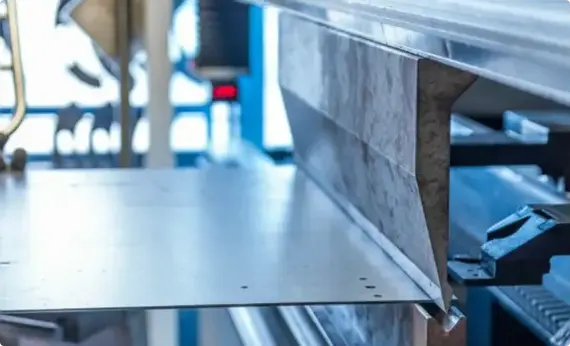
20 Gauge 321 Stainless Steel Sheets and Strips 2B Finish
As a direct factory of 20 gauge 321 stainless steel 2B finish, BEOBN will offer 20 gauge 321 stainless steel 2B finish sheets and 321 stainless steel 2B strips direct price. 20 Gauge 321 alloy steel sheet and strip is a stabilized stainless steel whi
As a direct factory of 20 gauge 321 stainless steel 2B finish, BEOBN will offer 20 gauge 321 stainless steel 2B finish sheets and 321 stainless steel 2B strips direct price. 20 Gauge 321 alloy steel sheet and strip is a stabilized stainless steel which offers as its main advantage an excellent resistance to intergranular corrosion following exposure to temperatures in the chromium carbide precipitation range from 800 to 1500°F (427 to 816°C). 20 gauge 321 stainless steel 2B finish sheet and strip is stabilized against chromium carbide formation by the addition of titanium. 321 stainless steel 2B finish sheet is non-magnetic.
While SS 321 2B finish sheet continues to be employed for prolonged service in th4e 800 to 1500°F (427 to 816°C) temperature range, 304L austenitic stainless steel 2B strip has supplanted this stabilized grade for applications involving only welding or short time heating.

20 Gauge 321 Stainless Steel Sheets and Strips Mechanical Properties:
Yield Strength, 0.2% Offset psi: 30,000
Ultimate Tensile Strength psi: 75,000
Percent Elongation in 2 in. or 51 mm: 40.0
Hardness, Max. RB (Sheet & Strip): 95
20 Gauge 321 stainless steel 2B finish sheet is also advantageous for high temperature service because of its good mechanical properties. Alloy 321 stainless steel offers higher creep and stress rupture properties than Type 304 and, particularly, Type 304L which might also be considered for exposures where sensitization and intergranular corrosion are concerns. This results in higher elevated temperature allowable stresses for this stabilized alloy for ASME Boiler and pressure Vessel Code applications. Inox 321 alloy has a maximum use temperature of 1500°F (816°C) for code applications like Type 304, whereas Type 304L is limited to 800° F (426°C).
321 austenitic stainless steel is particularly useful under conditions which cause polythionic acid stress corrosion of non-stabilized austenitic stainless steels such as Type 304. 321 austenitic stainless steel 2B sheet exposure of non-stabilized austenitic stainless steel to temperatures in the sensitizing range will cause the precipitation of chromium carbides at grain boundaries. On cooling to room temperature in a sulfide-containing environment, the sulfide (often hydrogen sulfide) reacts with moisture and oxygen to form polythionic acids which attach the sensitized grain boundaries. Under conditions of stress, intergranular cracks form. Polythionic acid SCC has occurred n oil refinery environments where sulfides are common. The stabilized 321 austenitic stainless steel 2B finish strips offers a solution to polythionic acids SCC by resisting sensitization during elevated temperature service. For optimum resistance, these alloys should be used in the thermally stabilized condition if service related conditions may result in sensitization.
stainless steel processing
The manufacture of stainless steel involves a series of processes. First, the steel is melted, and then it is cast into solid form. After various forming steps, the steel is heat treated and then cleaned and polished to give it the desired finish. Next, it is packaged and sent to manufacturers, who weld and join the steel to produce the desired shapes.

Melting and Casting
The raw materials that constitute a stainless steel item are placed together and melted in a giant electric furnace. Intense heat is applied rigorously for a period of 8 to 12 hours during this step. Once the melting is complete, the molten steel is cast into desired semi-finished forms. Some of the most common forms or shapes include slabs, blooms (rectangular shapes), billets (these could either be round or square), rods, and tube rounds.

Forming
In the second stage, the semi-finished steel shapes undergo a series of forming operations. For instance, the stainless steel is hot rolled (heated and passed through enormous rolls). The blooms and billets mentioned above are converted to bar and wire. The slabs on the other hand are formed into plates, strips or sheets. It is very common to turn semi-finished steel shapes into bars, as it is the most versatile stainless steel form (it comes in all grades and sizes). You have round, square, octagonal, and hexagonal bars, each suitable for a different type of application.

Heat Treatment
The various stainless steel forms undergo a thorough annealing process during this step. Annealing is another name for heat treatment where the stainless steel is heated and cooled in a controlled environment. The purpose of this heat treatment is to relieve the pent-up stress inside the stainless steel and soften the material to make it more suitable for a wide variety of applications. The people in charge of carrying out the annealing process have to be very careful about the conditions as even the slightest of changes in the temperature, pressure, duration, or cooling rate could result in a faulty product.

Descaling
During the annealing process, a certain amount of scale appears on the surface of the stainless steel. This scale can be removed using a number of different processes that are collectively known as descaling. Pickling is one of the more common methods of carrying out the descaling process.

Cutting
The semi-finished, heat-treated, and descaled stainless steel forms are cut into specific shapes in this step. Mechanical cutting is performed with the aid of guillotine knives, blanking, nibbling, and high-speed blades.

Finishing
Finishing is applied to help the stainless steel product achieve its signature aesthetically appealing appearance. Finishes are also needed to make the stainless steel product smooth and easier to clean, which is a top requirement in sanitary applications.
